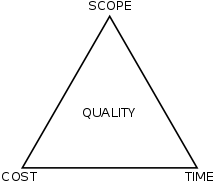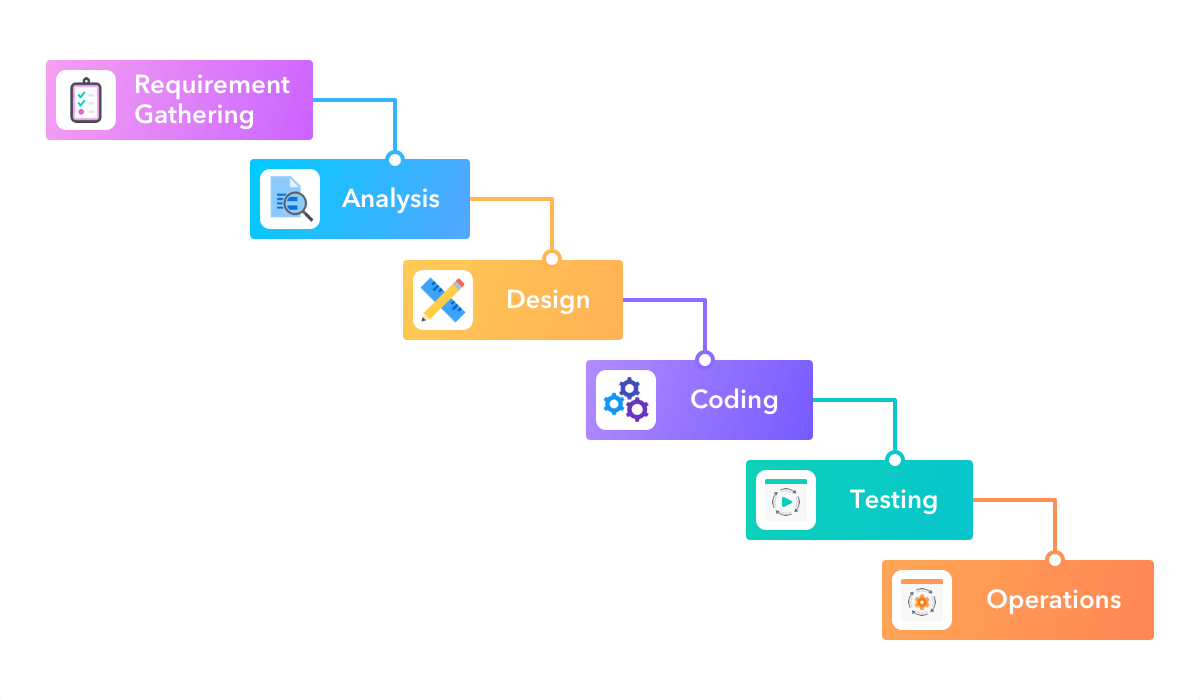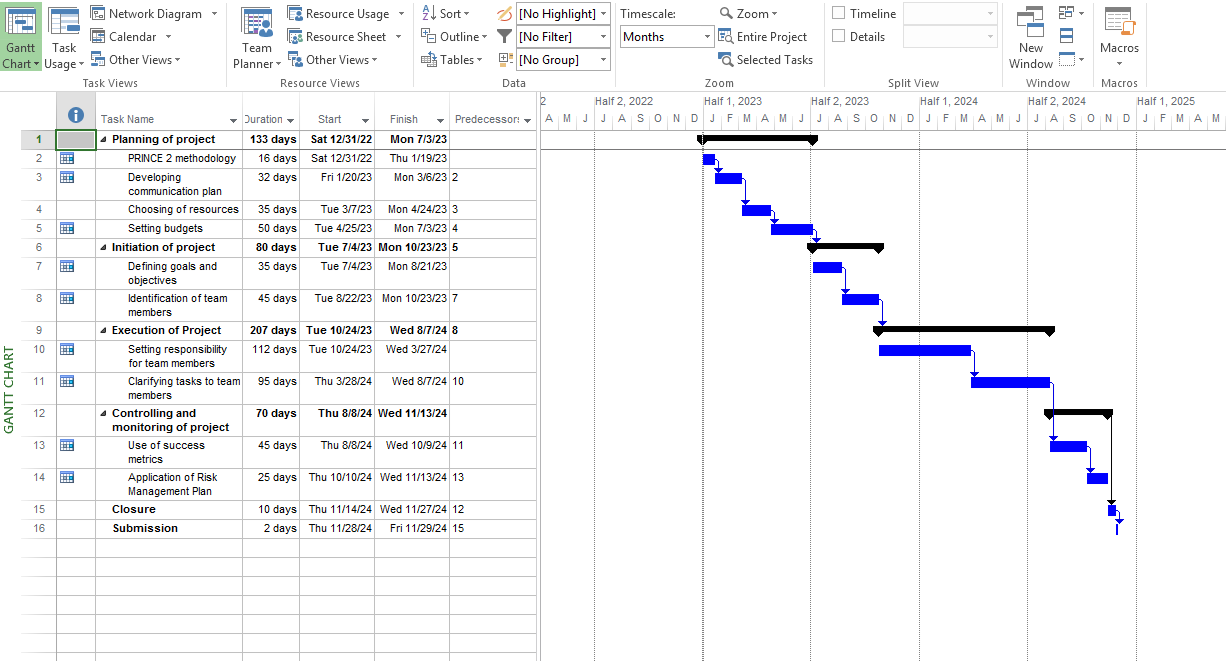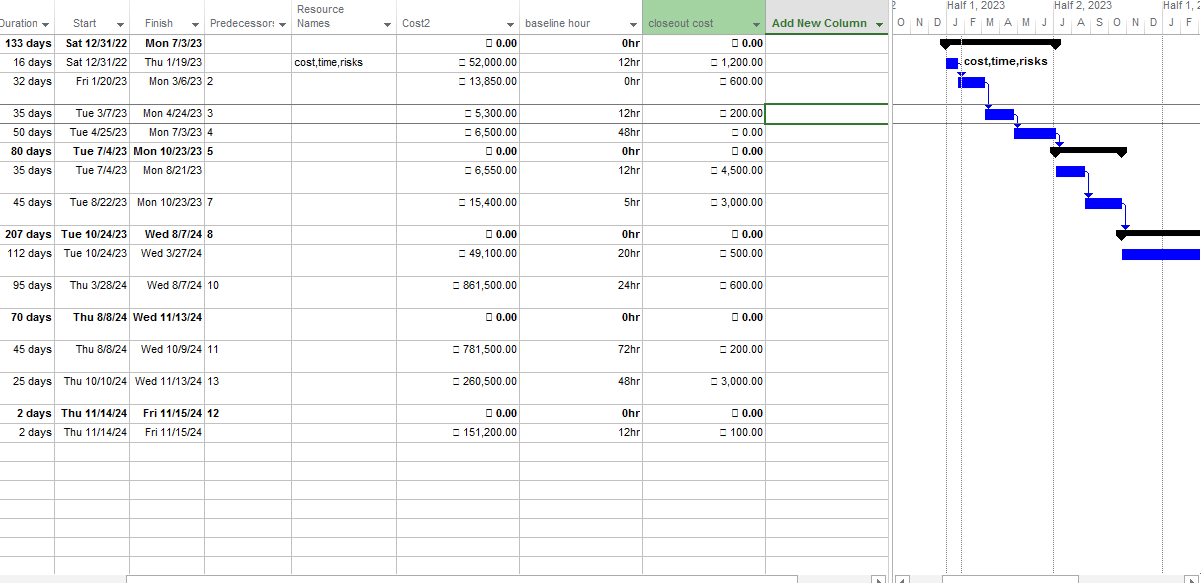ENGM91 Project Management and Control Assignment Sample
Module code and Title: ENGM91 Project Management and Control Assignment Sample
Introduction
“Project management” includes utilisation of specific knowledge, skills, and tools for delivering valuable returns to individuals. It acts as a discipline of applying specific processes and principles for initiation, planning, execution, and managing the way initiatives are implemented within organisation. The work includes evaluation of the “Sodor Oil Terminal project”. As it is a multi-discipline project, it requires strong understanding of civil, structural, mechanical, construction, and electronic engineering.
Moreover, a project manager appointed to this project requires maintaining strong leadership and managerial traits. This report provides critical evaluation of team associated with this project along with phases of this project. Besides, it also assists in identification of any issues related to “scope, budget as well as time”. A proper project management plan requires knowledge, skill as well as tools to execute a project effectively.
A successful project plan is important along with communication as well as harmony among team members to successfully accomplish a project task. This study has discussed many factors in project planning and management, which has helped in developing project methodology and its planning in developing Sodor Oil Terminal project. This whole project consisted of many critical reviews of project planning by highlighting responsibilities of project managers.
Critical review of group
Management of Sodor Oil Terminal project took place with development of project team consisting of five members. For managing any project, the team members must have adequate information regarding project. Our team acquired initial project case study one week from start of the project. To successfully manage project, we started studying project and making notes on it. As argued by Schefferet al.(2018), a project manager has a crucial role in any project. In our project, the project manager has task to manage all work-related tasks from initiation to closure of project.
For management ofSodor Oil Terminal project, team was formed by appointment of an adequate team leader who acted as manager of this project. After the case study was reviewed by all team members, a contract of work was formed by group which was signed by all team members after agreeing to all terms and conditions. The agreement comprises detailed information regarding project, including objectives, key milestones, and responsibility of each team member.
It has highlighted starting and needs of project along with session in which our team had to manage it. Overall project plan forSodor Oil Terminal project was developed by considering instructions given in case study. It has allowed development of strong management plan for initiation, execution, control, and closure ofSodor Oil Terminal project. Through usage of initial data, development of work breakdown structure took place in our group which supported overall management of this project.
Our group did project planning work using MS project and Gantt chart. Main stages of project management are “initiation”, “planning”, “execution”, “monitoring & control”, and “closure”. While fulfilling requirements of five main project management stages, various project-related components were grouped accordingly. For assigning responsibility to each manner, we took assistance from “responsibility matrix”.
Development of a project team comes under the initial stage of project management. In context with “Sodor Oil Terminal Project” (SOTP), we formed a group that consisted of five team members. However, without adequate knowledge of the project it is difficult to proceed with project management. Thus, we began to develop knowledge about SOTP through reading case studies before 1 week of this project management. As per the views of Chesbrough et al. (2018), gaining adequate knowledge regarding a project would be helpful to make quality decisions and reduce chances of error.
Our team members try to make a note of crucial information related to this project. We tried to gain knowledge for coping with upcoming obstacles and to execute our project tasks efficiently. However, the importance of project managers in projects cannot be denied. As mentioned by Oshadie and Wickramasinghe (2021), a project manager makes it easy to excite project tasks by separating all project tasks into “more manageable pieces”. Besides, an effective project planning can be accomplished in such a way that would fulfil the strategic goal of our team.
We have chosen one team leader as our project manager for managing this task. He was responsible for looking into this project’s tasks from beginning to end. After appointing a project manager, we shifted our focus to develop a “project contract”. According to Amin et al. (2020), a contract is basically an “outline” regarding “ground rules” for team members. In this context, we developed a project contract that consists of detailed “project information, project objectives, responsibilities of each team member as well as milestones of this project.
Project contracts get signed by each team member and it can act as legal paper in any future difficulties. This contract concentrates on all project requirements that need to be managed by our team members. The project plan regarding SOTPwas developed as per the instructions given in the case study. Moreover, we have considered a case study for exciting this project plan successfully.
As stated by Zhang et al. (2018), identification of project risks is important for managing those risks successfully and reducing time for accomplishing a project plan. It has helped us to develop an effective project plan that would successfully manage a project.
Application of project planning, techniques and procedures have been used appropriately so that there is no flaw in development of “Sodor Oil Terminal Project”. Project planning tools and techniques would help in increasing “communication, team work, monitoring, evaluation and others”. Therefore, initiating problem solving abilities to change any management abilities or implementation of any project strategy would be useful for project reviews that are done by project team leader.
Gantt chart is developed to get an Indra on project planning and its timing properly and to also allocate tasks to project team members of five properly. I have been able to identify strategy goal of our team, which has enabled us to develop on-site rules to follow so that any risk is managed accurately. Our chosen leader has managed responsibilities and situations in this project by communicating with each member to gather creativity. Concentrating on project requirements has helped in achieving success in this project. Execution of project management and planning is essential for accomplishing success in this project.
Monitoring project planning is done by our team leader to track whether every member is doing their work properly. Therefore, complements of project related criteria are thoroughly monitored with effective assistance through initial data development. However, effective planning is important in managing project development properly.
Appointing a project manager was first stage in working on a high standard project. This has helped our team to have a leader who would guide us properly in managing success of a project. Detailed information is shared with all team members so that they can give insights on ways to achieve success in developing this oil terminal. Overall project planning is tackled by fulfilling requirements in a project.
Critical appraisal and discussion evaluating teams
Success of project can be defined as ability of a project to meet expectations of related parties. A project is also considered as successful if it is completed within estimated time and cost (Takagi and Varajão, 2019). In case of Sodor Oil Terminal project, success can be highlighted by ability of team members to complete all phases within estimated timeframe.
Management of risk is necessary for completion of any project. Risk can be defined as probability of an uncertain event that can occur within a project (Dodevska and Mihić, 2018). In case of Sodor Oil Terminal project,both team members had specific role in effectively completing it in estimated time frame.
Techniques of project management were required to be utilised throughout management of a project for completing it as per needed by target user group. For completion of Sodor Oil Terminal project, the project members utilised waterfall model. It acts as sequential approach that allows step-by-step completion of project phases.
Management of Sodor Oil Terminal project
Project success
Project success depends on the ability of managing a project. As per the opinion ofYouneszadehet al. (2020), success of a project can be measured through all the goals that have been fulfilled by a project team. In this context, the project management triangle is an important model that can help to understand important factors for project succession.
Project triangle
 Figure 1: Aspects of Project Management Triangle (Source: Influenced by Pollack et al. 2018)
Figure 1: Aspects of Project Management Triangle (Source: Influenced by Pollack et al. 2018)
A project has three main “constraints”, that are “scope, cost and time”, which determines quality of a project. As per the views of Pollack et al. (2018), in case time increases the budget of project would increase and to meet scope of project time as well as budget also be disrupted Scope of project refers to accomplish all project requirements that can take longer time as well as can increase project budget. In this way quality of project depends on these three constraints and the success of this project depends on its quality.
Managing project risks
Project risk management is an integral part of project management and it also determines success of project tasks. As mentioned by Hartono et al. (2019), risk management assists in eliminating any disastrous impact over project quality and project budget. It helps to keep consistency in project operations that ultimately leads to a successful project management.
In context with SOTP, two team members were assigned to identify risks and develop mitigation strategies to successfully manage project risks. Besides, risk register tools have been used to manage this project risks successfully. This tool allows members to identify threat, weakness along with strength and opportunity that helps in effective risk management for SOTP.
Project management techniques
There are several effective techniques of managing projects. As mentioned by Pellerinand Perrier (2019), Gantt chart is an efficient project management tool that provides an overview of project plan and progression. Moreover, waterfall techniques has been follword in SOTP for efficient project management.
Waterfall project management techniques
 Figure 2: Aspects of Waterfall Project Management (Source: Influenced by Thesinget al. 2021)
Figure 2: Aspects of Waterfall Project Management (Source: Influenced by Thesinget al. 2021)
Waterfall project management technique has six total stages that help project managers to manage a project task successfully. As opined by Thesinget al. (2021), this project management techniques provides a clear structure and helps to reach goals through effectively transferring information among team members. Project manager first collects all required items for managing SOTP and then analyses it to develop a structured design of entire project planning.
After that all designed plans are implemented or put into practice. Therefore, testing takes place and it is for ensuring that all required project items are fulfilling as per expectations. Moreover, deployment and maintenance of project tasks takes place according to waterfall project management techniques. This technique has been followed as per the instruction of our project manager for successfully accomplishing the project task. However, following this technique solely leads to an inflexible project structure that increases difficulty through implementing this technique.
Project planning: Planning acts as first stage of project management. Planning of Sodor Oil Terminal project took place by reviewing related case study and developing project management team. For initiation of project, project authorities got brief regarding Sodor Oil Terminal project and related requirements. This has helped in planning overall project and setting deadlines. Further, usage of PRINCE2 methodology has been required in this project.
Project planning is an integral part of project initiation. This project management has followed a PINCE 2 methods for managing project management. Project planning is an important aspects of project management. It helps to execute all project tasks successfully. In retain to SOTP, project planning provided a clear structure and set deadlines to accomplish this project on time.
PRINCE 2 methodology
 Figure 3: Components of PRINCE2 Project Methodology (Source: Influenced by Islam and Evans, 2020)
Figure 3: Components of PRINCE2 Project Methodology (Source: Influenced by Islam and Evans, 2020)
PRINCE2 management method refers to “Project In Controlled Environment” and helps to manage project tasks successfully. As per the views of Islam and Evans (2020), this method provides “strength and reliability” in project management methods. Moreover, concentrate on quality and continuously assist in keeping a project on track. It has seven components that provide structure for managing a project proficiently. In this context, SOTP, apart from waterfall management methods, PRINCE2 method also has been followed for optimising quality of project as well as to manage project tasks successfully.
Developing communication plan
Advanced technologies such as “cloud computing, email” have been considered as communication tools.
Choosing of resources
Resources have been chosen according to requirements. Resources such as “pipes, valves, gears and other physical resources” have been chosen as resources.
Setting budgets
Budget setting is an integral stage of project management. In the process of project planning of SOTP, a project bidet has been determined for executing tasks.
Creation of timeline and schedule
Timeline creation and schedule assist in completion of project tasks on time. Project planning took 20 weeks for
Project initiation: It is second stage of project management. By considering project brief, the planning phase of this project was started. It comprises information regarding cost components, vendor data, overall project’s duration, and guidelines for regulatory compliance and non-compliance. After that, project manager utilised vendor selection process and criteria for election of an adequate vendor who is capable of providing good quality materials and resources for the project. Process of selecting a vendor was done after a meeting with team members.
Defining goals and objectives
Defining project goals and objectives comes under project planning that helps to initiate a project according to predetermined aims as well as objectives. Goal of this project is to complete the project on time with allocated resources as well as budget and deliver the best quality project.
Identification of team members
Contract sign has provided a structure and also delegate tasks. In context of SOTP, team members have been identified through delegating tasks.
Development of team
Team development has been done according to voting and is an important aspect of project management.
Initiation of this project finished within 1 week.
Project execution: Execution of project is third stage of project management in which planned results are executed as per requirements of clients (Doskočil and Lacko, 2019). In case of Sodor Oil Terminal project, after evaluation of planned results and making suitable strategies, the project was executed. This has helped in ensuring appropriate initial start of Sodor Oil Terminal project.
Setting responsibility for team members
After setting responsibility in initiation and project planning, all tasks have been delivered according to the project contract.
Clarifying tasks to team members
Responsibility of tasks has been divided equally among team members and it increased efficiency of managing project tasks successfully.
Application of technology
Advanced technology has been incorporated in this project management. Technologies such as AI and Big data analytics have been used.
Development of infrastructure of Oil depo
Valves, pipes, gears and physical resources as well as many other resources were required to develop the infrastructure of the oil depot.
Execution of the project took 20 weeks to accomplish project tasks.
Project monitoring & control
It is fourth stage of project management which helps in highlighting issues associated with project and taking corrective actions (Chen et al. 2021). In case of Sodor Oil Terminal project, group evaluation took place after execution phase which has helped in highlighting areas where corrections are needed. It has been found that project duration increased by 50 weeks and cost increased by £55500. These elements act as unfavourable variances in project.
For taking adequate controlling measures, the team reduced project time by 45 weeks and cost by £55000. The new updates were saved as a modified project plan. Further, the changes were updated in related documents such as “vendor selection process document”, “vendor selection matrix document”, and “cost model document”.
Control and monitoring project assist project managers to avoid any disruption in between project tasks. Moreover, it helps to track details of projects. All of this ultimately increases efficiency in project tasks. In context with SOTP, control and monitoring determine requirements of further improvement as well as correction in these project tasks. However, extra expenditure is required for making changes and improving project tasks.
Changing processes increase project time to 50 weeks and increase overall project budget by £55500. It got controlled through strategic planning and this project successfully accomplished and delivered a quality project effectively. It reduced project time to 45 weeks and the budget decreased to £55000. This procedure took 3 weeks to complete.
Use of success metrics
Success metrics of a project depends on many factors. As mentioned by Vrchotaet al. (2020), quick responses from manager, flexibility, teamwork are beneficial for determining the success of a project. Any conflict among team members or any communication gap can lead to vulnerable impact on project management.
Application of Risk Management Plan
Implementation of a risk management plan has helped this project to eliminate or mitigate any risks. The Risk management plan has been completed through risk register tools. It has determined potential threats, opportunities, strengths as well as weaknesses of this project work. Moreover, it increases project efficiency and helps to complete these project tasks on time.
Project closure
Closure of this project was taken place by notifying board members that project is ready for closure. During the process, actual results were compared with estimated ones for highlighting favourable or unfavourable variances. After ensuring project is up to the mark, it has been handed to owner. Draft implementation has helped in completing project work, which has helped in ending projects properly and aligning with every risk factor so that there are no further negative aspects of a project management. It took 1 week to close the project. It took 1 week of time period for accomplishing this process.
Conclusion
Sodor Oil Terminal project was a huge project that was required to be managed by a multi-disciplined team. The members required meetings frequently to discuss project’s progress. The project was handled by a group of five members and detailed information was obtained from Sodor Oil Terminal project case study.Besides, it also assists in identification of any issues related to “scope, budget as well as time”.
A proper project management plan requires knowledge, skill as well as tools to execute a project effectively. A successful project plan is important along with communication as well as harmony among team members to successfully accomplish a project task.
This study has discussed many factors in project planning and management, which has helped in developing project methodology and its planning in developing Sodor Oil Terminal project. This whole project consisted of many critical reviews of project planning by highlighting responsibilities of project managers.
References
Chesbrough, H., Lettl, C. and Ritter, T., (2018). Value creation and value capture in open innovation. Journal of Product Innovation Management, 35(6), pp.930-938.
Dodevska, Z.A. and Mihić, M.M., (2018). Augmented Reality and Virtual Reality Technologies in Project Management: What Can We Expect?. European Project Management Journal, 8(1), pp.17-24.
Doskočil, R. and Lacko, B., (2019). Root Cause analysis in post project phases as application of knowledge management. Sustainability, 11(6), pp.66-67.
Grzesik, K. and Piwowar-Sulej, K., (2018). Project managers’ competencies and leadership styles from the perspective of organizations functioning in Poland. Journal of Entrepreneurship, Management and Innovation, 14(3), pp.35-60.
Hartono, B., Wijaya, D.F. and Arini, H.M., (2019). The impact of project risk management maturity on performance: Complexity as a moderating variable. International Journal of Engineering Business Management, 11, p.1847979019855504.
Islam, S. and Evans, N., 2020. Key success factors of PRINCE2 project management method in software development project: KSF of PRINCE2 in SDLC. International Journal of Engineering Materials and Manufacture, 5(3), pp.76-84.
Oshadie, N.L.B. and Wickramasinghe, C.N., (2021). How Important Communication Skills on Project Success? Exploration of Project Managers Perspectives.
Pellerin, R. and Perrier, N., (2019). A review of methods, techniques and tools for project planning and control. International Journal of Production Research, 57(7), pp.2160-2178.
Pollack, J., Helm, J. and Adler, D., (2018). What is the Iron Triangle, and how has it changed?.International journal of managing projects in business.
Scheffer, M., Mattern, H. and König, M., (2018). BIM project management. In Building Information Modeling, 2(1), pp. 235-249.
Takagi, N. and Varajão, J., (2019). Integration of success management into project management guides and methodologies-position paper. Procedia Computer Science, 16(4), pp.366-372.
Thesing, T., Feldmann, C. and Burchardt, M., (2021). Agile versus waterfall project management: decision model for selecting the appropriate approach to a project. Procedia Computer Science, 181, pp.746-756.
Vrchota, J., Řehoř, P., Maříková, M. and Pech, M., 2020. Critical success factors of the project management in relation to industry 4.0 for sustainability of projects. Sustainability, 13(1), p.281.
Youneszadeh, H., Ardeshir, A. and Sebt, M.H., (2020). Predicting project success in residential building projects (RBPs) using artificial neural networks (ANNs). Civil Engineering Journal, 6(11), pp.2203-2219.
Zhang, Y., Liu, S., Tan, J., Jiang, G. and Zhu, Q., 2018. Effects of risks on the performance of business process outsourcing projects: The moderating roles of knowledge management capabilities. International journal of project management, 36(4), pp.627-639.
Appendices
Appendix 1: Gantt Chart
Appendix 2: Baseline plan and closeout plan
Know more about UniqueSubmission’s other writing services:

